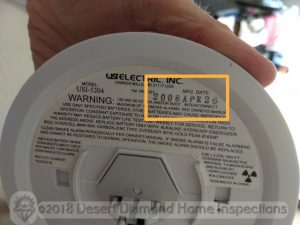Why home safety maintenance?
Home safety maintenance, while extremely important, is often not at the top of the priority list for home owners. Every home should have safety devices, such as smoke alarms, carbon monoxide detectors, and fire extinguishers. However, if these devices do not work, they will be useless in a case of emergency. Therefore they require regular maintenance to ensure they are functional.
Smoke alarms
First of all, does your house have smoke alarms? Smoke alarms sense smoke from a fire and alert people in a home of the impending danger with a loud siren noise. This allows them (the people, not the smoke alarms) to escape the home alive. Smoke alarms have been around for decades and have saved countless lives.
Verify that smoke alarms are present in each one of these locations in your home:
- Each bedroom
- Right outside each bedroom area
- On each level of the house including basements and habitable attic areas
They should be installed either on the ceiling or on the wall within four to twelve inches of the ceiling.
Change the battery
You should change the battery in each smoke alarm once a year. Some smoke alarms are hardwired and use a battery as a backup. Others only use a battery. Either way, the battery is important and must be in good shape. This ensures that the alarm will always work when needed. It also prevents that infernal low-battery beeping noise at 3 am when you’re trying to sleep.
Tip: Newer smoke alarms come with a 10-year lithium ion battery that you do not have to change. They cost a few extra bucks but it’s worth it – trust me.
Test the alarm
Push the test button on the alarm regularly as required by the manufacturer. If you push the button and hear a very loud and unpleasant sound, you know the button, power source, and noise maker are working. If you don’t have the manual for your smoke alarms, you can usually download it for free from the manufacturer website.
Clean the alarm
Since you’re already up there testing it, you might as well clean the smoke alarm. If they get very dirty, they can malfunction.
Replace old smoke alarms
The rule is that you should replace any smoke alarm older than ten years. Like most other devices, they age and can fail with old age.
To check the age of a smoke detector, remove it from its mount on the wall or ceiling. Then look at the back of it for a sticker or stamp with a manufacturing date.

For more information about smoke alarm maintenance, see our blog article here.
Carbon monoxide detectors
If your house has an attached garage, a fireplace, or a gas furnace or gas water heater, you should also have a carbon monoxide detector installed in your home. Carbon monoxide (CO) is a toxic gas that you cannot smell, taste, or see. Therefore it can kill a person before they become aware of its presence. A carbon monoxide alarm will detect the presence of this deadly gas in your home and sound an alarm.

Like smoke alarms, they require testing. Push the test button regularly to ensure the noise maker (and the test button) is working.
Inspect the alarm and make sure it is clean. Dust or dirt can cause it to malfunction.
Depending on the model, they might also require battery replacement.
Refer to the manual for your particular model for specific maintenance instructions.
Fire extinguishers
Portable or hand-held fire extinguishers are you first line of defense against small house fires. It is a good idea to have several around your house in places where they might come in handy. For example, the kitchen (regardless of your cooking skills), master bedroom, garage, living room near the fireplace or Christmas tree – you get the idea.
For fire extinguisher maintenance, follow these steps:
- Remember whether you actually own any fire extinguishers and where they might be located.
- Verify that your fire extinguishers are actually located where they should be.
- Make sure that the fire extinguishers are easily accessible and not buried under or behind stuff.
- Check the pressure gauge and verify the needle is in the green. See photo above.
- Inspect the fire extinguishers for any signs of physical damage or missing pieces.
- Every few years, have the fire extinguishers inspected by a qualified professional. Refer to the manual for your particular model for specific maintenance instructions.
Safety bars
Some homes have safety bars over bedroom windows. These are intended to keep burglars out. Unfortunately, if they do not work as intended in case of an emergency, they can also prevent residents of a home from escaping the home. This could ruin your day. If your home has safety bars, you should include them in your home maintenance plan.
First, test the release for each security bar assembly on a regular basis. Make sure they can be easily released from the inside and opened to provide an easy escape route.
Second, make sure that everybody living in the home is aware of their presence and knows how to release them in case of emergency.
Conclusion
Home safety maintenance is very important to ensure that the safety devices in your home that could potentially save your life are functional. The few minutes and few dollars you spend on this could save your life some day. We can probably all agree that it is a worthy investment.

